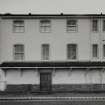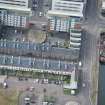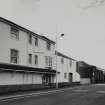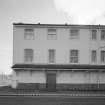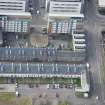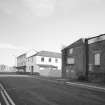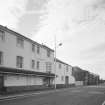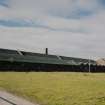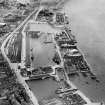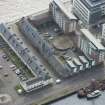Dundee, Marine Parade, Panmure Shipyard
Shipyard (19th Century)
Site Name Dundee, Marine Parade, Panmure Shipyard
Classification Shipyard (19th Century)
Alternative Name(s) Wm R Stewart & Sons
Canmore ID 232791
Site Number NO43SW 743.01
NGR NO 40921 30187
Datum OSGB36 - NGR
Permalink http://canmore.org.uk/site/232791
- Council Dundee, City Of
- Parish Dundee (Dundee, City Of)
- Former Region Tayside
- Former District City Of Dundee
- Former County Angus
Desk Based Assessment (September 2005)
An archaeological desk based assessment was undertaken by Headland Archaeology of a parcel of land at the South Wharf, City Quay, Dundee. The study was commissioned by FM Developments. Information regarding the archaeological potential of the site was required by the planning authority in advance of determination of the planning application.
D Atkinson 2005
Standing Building Recording (April 2006)
This report presents the results of a standing building recording survey carried out by CFA Archaeology Ltd (CFA) in April 2006 at the former Marine Parade workshops, City Quay, Dundee (NGR: NO 4090 3016, Fig. 1). A Written Scheme of Investigation was designed to assess the architectural and historical development of the former workshops (West Buildings) and patent slipway of the early 19th century and the offices and workshops (East Buildings) of the late 19th-century Panmure Shipyard workshops. The work was carried out in order to fulfil a planning condition for archaeological building recording prior to alterations required for conversion to domestic housing. The work was carried out on behalf of Unicorn Property Group whose architects supplied CFA with elevation drawings and digital ground layout plans of the proposed development site.
The most interesting features brought to light during the survey are the extant elements that survive within the former blacksmiths shop… and the original roof trusses found in the loft of Unit M… It is clear that several forging machines have been removed since they were first seen by the Inspectors of Historic Scotland in 1989.
The established transmission routes are of technical interest and it is likely that originally these were driven by take-off drives from the steam engine house. These drives continued throughout the life of the workshops and were later driven by a diesel engine within the doorway of Unit B… The question is, why site a diesel engine in such an unlikely position? The simple answer is that the engine required an exhaust system that was vented via large iron pipes that ran up through the ceiling and out through the back wall of the blacksmith's workshop.
The queen-post arrangement of roof-trusses… in Unit M loft is a rare survivor; such features are normally replaced by later A-frame constructions that are of a much simpler design. The queen-post system allowed this part of the building to be used for such work as sail making and storage. This part of the roof may be the only area that survived a fire in 1869, when all other roof trusses appear to have been replaced by standard scarf-jointed A-frame roof trusses.
The survey has also shown that roughly one quarter of the patent slipway survives and that this feature contains some interesting archaeological features… including its original stone sets and other furniture, including steps, arched openings and iron fastening rings.
The historical account produced by Professor McKean clearly shows that the focus of the Panmure shipyard was facing west, and related to the older docks and the tidal harbour. The Eastern Protection Wall, or Marine Drive, was considered as a separate and later development. The buildings that survive therefore make more sense by being viewed from the west. Not only is the ground in front of the buildings entirely made up, but the area around the upper end of the patent slip.
Information from CFA, 2006
Publication Account (2013)
PANMURE YARD
Converted to housing is the brick-built Panmure Shipyard of Alex. Stephen and Sons / Dundee Shipbuilders Co. (NO 40921 30187, NO43SW 743.01). The nearest slip into the River Tay is that from which RRS Discovery was launched in 1901. Artwork in granite records this in the hollow shape of the ship’s ribs.
M Watson, 2013




















